Printed Magazines are even more viable if designed correctly; we investigate why.
If you were to walk down the aisle of WHSmith’s or even the magazine aisle in your supermarket, you would hardly consider the future of printed magazines to be in jeopardy.
At first glance, the sheer scale of the magazines available and the variety of subjects they cover is promising. You can invariably find a magazine for anything from trout fishing and steam railways to high fashion & luxury goods and architecture.
Yet, the discussion on the future of magazines seems to be commonly raised. The number is even greater when you consider publications that are not sold through shops but through subscriptions and memberships. So why the doom and gloom?
Environmental concerns
A common argument for print versus digital is that printing involves paper and ink, which have environmental issues, even after recycled papers and modern inks are used.
This argument that digital is better as it does not involve ink and paper ignores the very nature of magazines and their place in society, which are almost always associated with having ‘time out’ and getting away from screens and phones.
The challenge is that not all magazines are equal and cannot be considered one. You need to look a little deeper into the lifecycle of the publication.
If recycling and digital-only magazines are your things, you could consider having your magazine or sections of it, professionally built in Canva so you can edit the content and send digital issues to your subscribers.
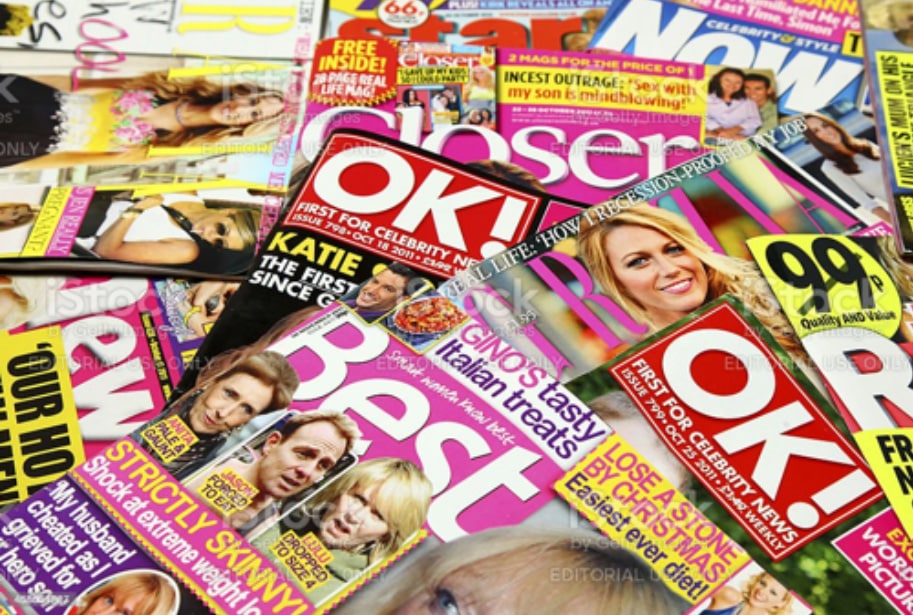
Disposable
There are many magazines in a whole range of different subjects that are naturally ‘disposable’.
These magazines are consumed & considered for as long as it takes for the next issue to be released. These magazines are very commonly subsidised by their advertising and promotions, often giving them the impression of substantial publications.
Most of these advertisements are about brand building and awareness rather than direct action adverts. They have a limited shelf life and a small possibility of being shared.
This criteria includes the weekly ‘chat/gossip’ magazines and the monthly ‘TV Times’.
The design language is very bright colours and shapes, large bold fonts and plenty of faces. These magazine designs are created to catch the eye and create enough intrigue to be picked up. When seen on the shelves together, it is hard to see where one magazine starts and the others finish.
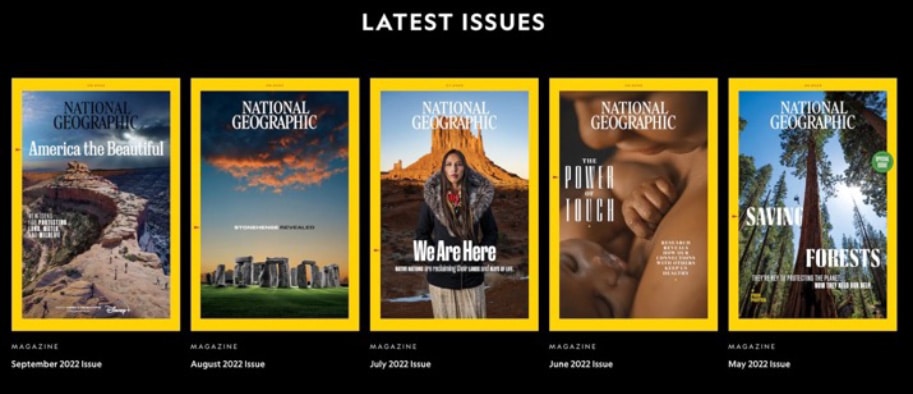
Collectable
There are magazines people buy as the information in them is relevant beyond the here and now and will still be of interest in months or years.
A great example is National Geographic, https://www.nationalgeographic.com/, which is a staple for libraries worldwide on the subject of the natural world. The design has changed little in decades, and its design/brand is instantly recognizable.
Magazines are designed to be retained and used as a resource investment and use lovely photography. They avoid gimmicks that would compromise their longstanding and well-defined brand values.
This type of magazine almost always invests in the spine as a design feature once stored; this will be the most commonly seen edge. The National Geographic spine acts as a contents list or summary of that particular publication, making browsing easy for subjects that may interest you.
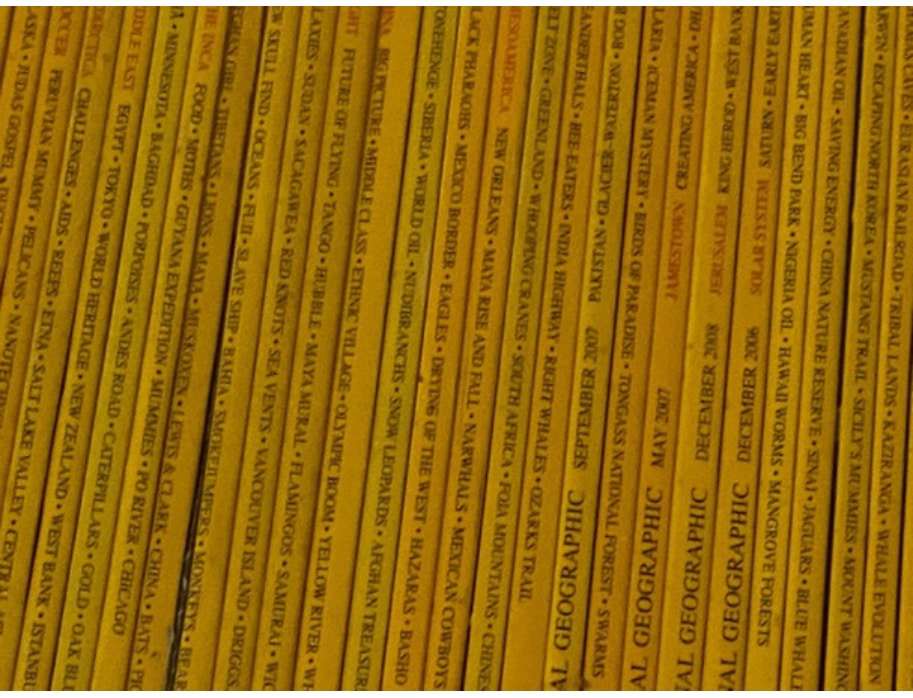
Monocle magazine is another monthly magazine that has heavily invested in design brand identity. Their set layout allows each cover to be unique whilst retaining the brand’s identity.
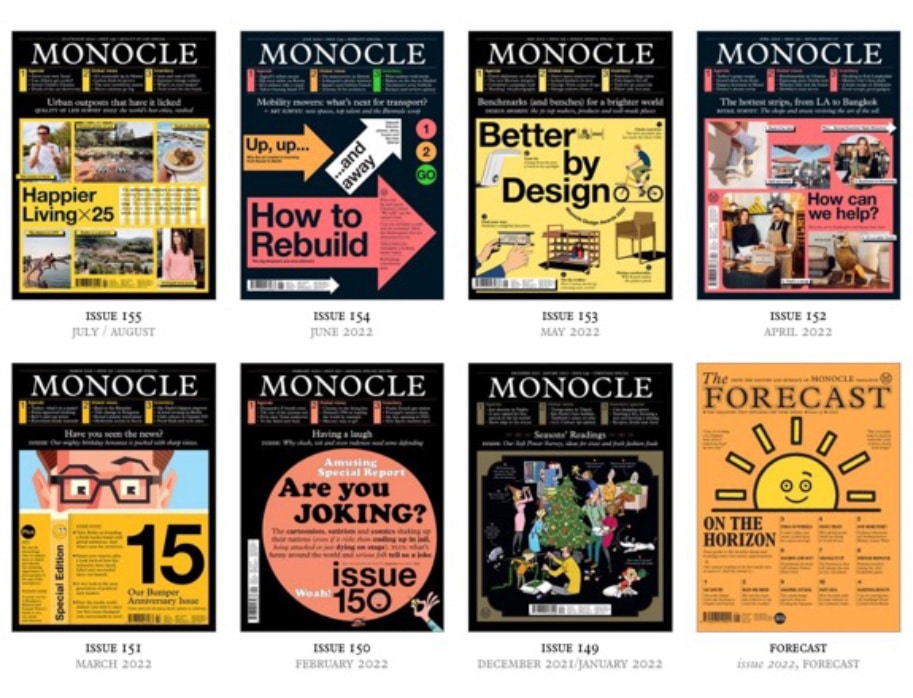
This pragmatic approach to design allows for brand consistency and freedom of photography, illustration or typography throughout the magazine.
The thoughtful design, similar to the spines of The National Geographic, means the Monocles spines show the date and have a graphical device to show the issue number and how it fits in a collection, as shown below.
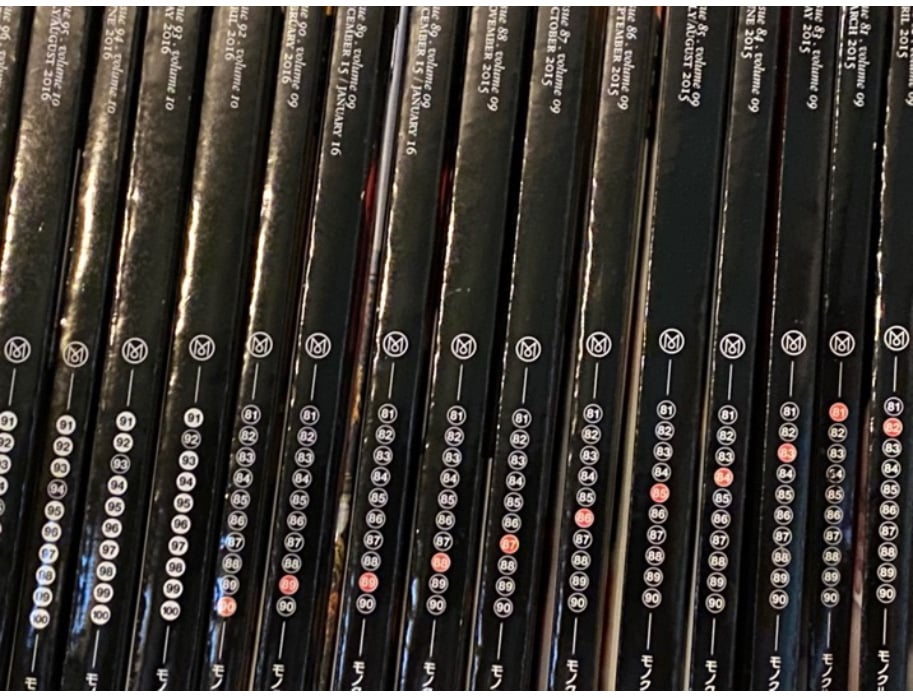
Industrial, Membership or business magazines
This group of magazines is very hard to quantify as other than those who receive them, very few others will even know they exist.
These magazines have a very specific niche and, therefore, need to reflect the best design that the collectables offer and the engagement and readability of the disposables. To achieve this, you need to have a clear brand strategy and a design team that knows your readers so they can balance the design accordingly.
Having a readership that has already committed to receiving the publication, the primary role is to deliver the magazine’s core benefit whilst encouraging them to appreciate, share and keep the publications for future reference and enjoyment.
This is where professional design is essential, as you must be mindful of how the magazine sits as an issue and as part of a greater library. A professional designer will balance these needs whilst fulfilling your publication’s brand guardian role.
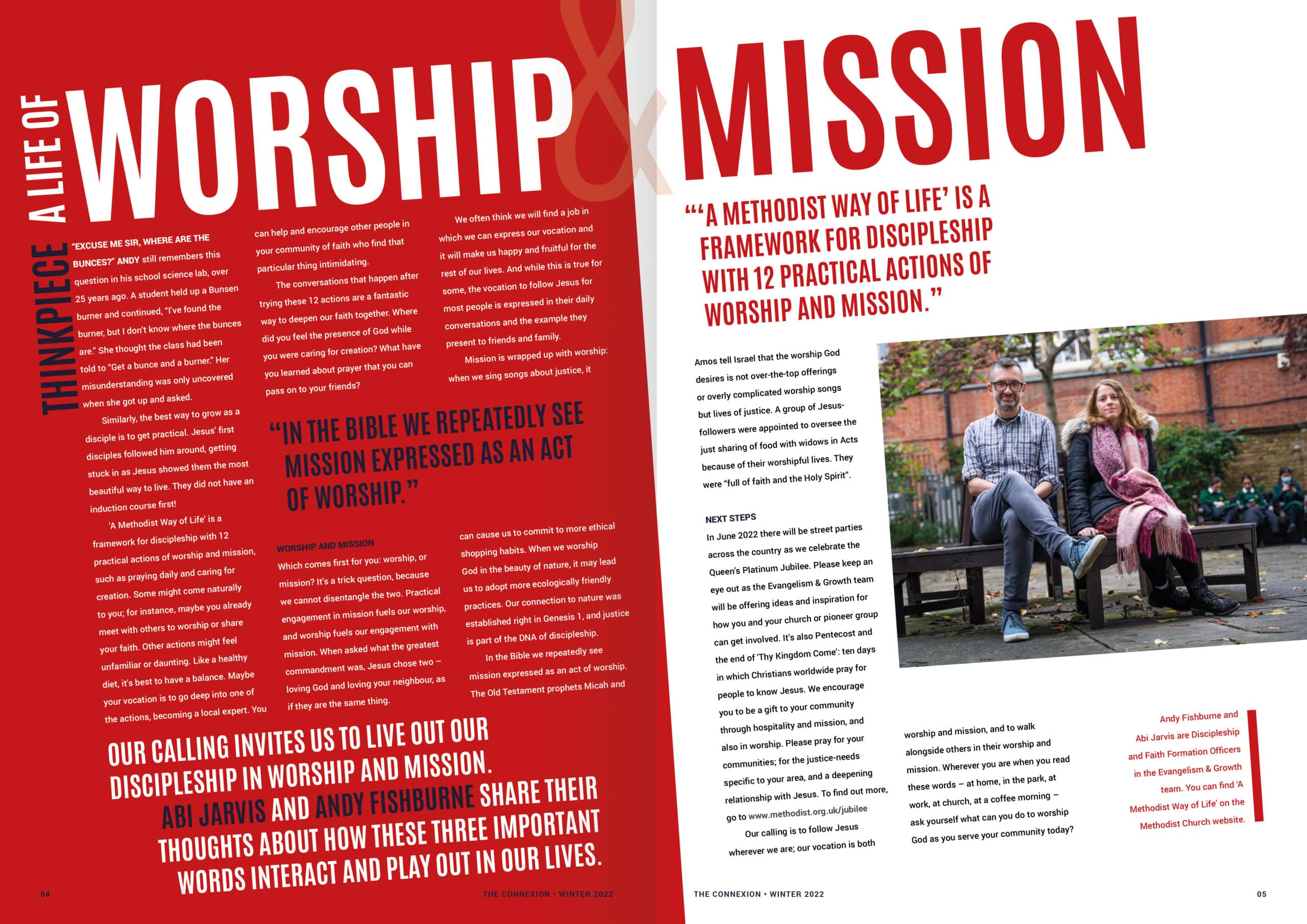
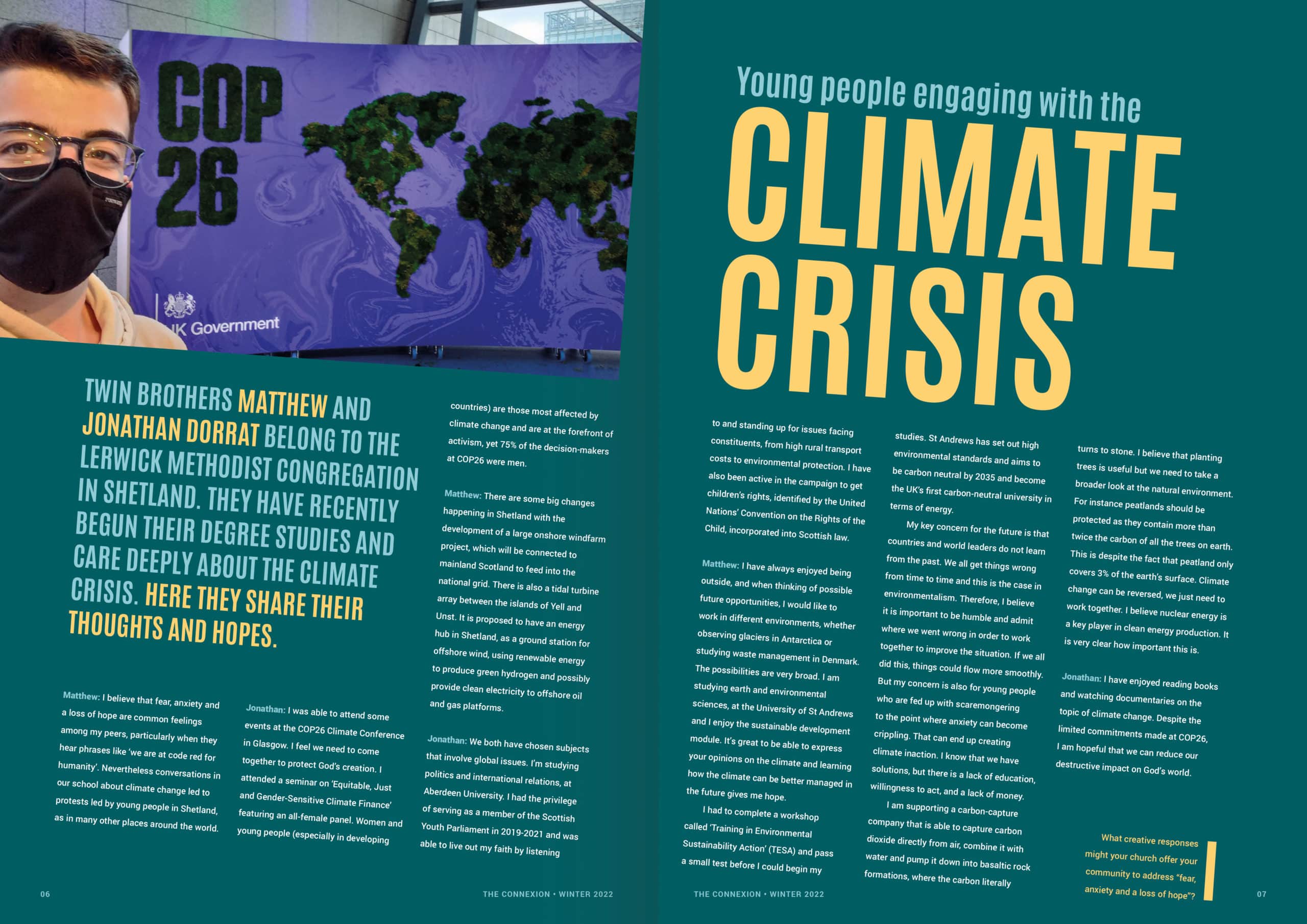
Toast has helped companies and organisations from a whole range of different sectors to create magazines that engage audiences, educate & advise, and sell or promote.
Magazines have helped to sell Luxury jets, cars and yachts to high-net-worth individuals who are bombarded with sales messages every day.
Other magazines, such as SOHA or Breakthrough Breast Cancer, have been designed to create or benefit a specific community or group. In every project, the audience is key, so it is designed with them first and foremost in mind.
We truly understand the design challenges faced with creating a successful magazine, but we also completely appreciate the project management, copy deadlines and advertising restraints put on the process.
